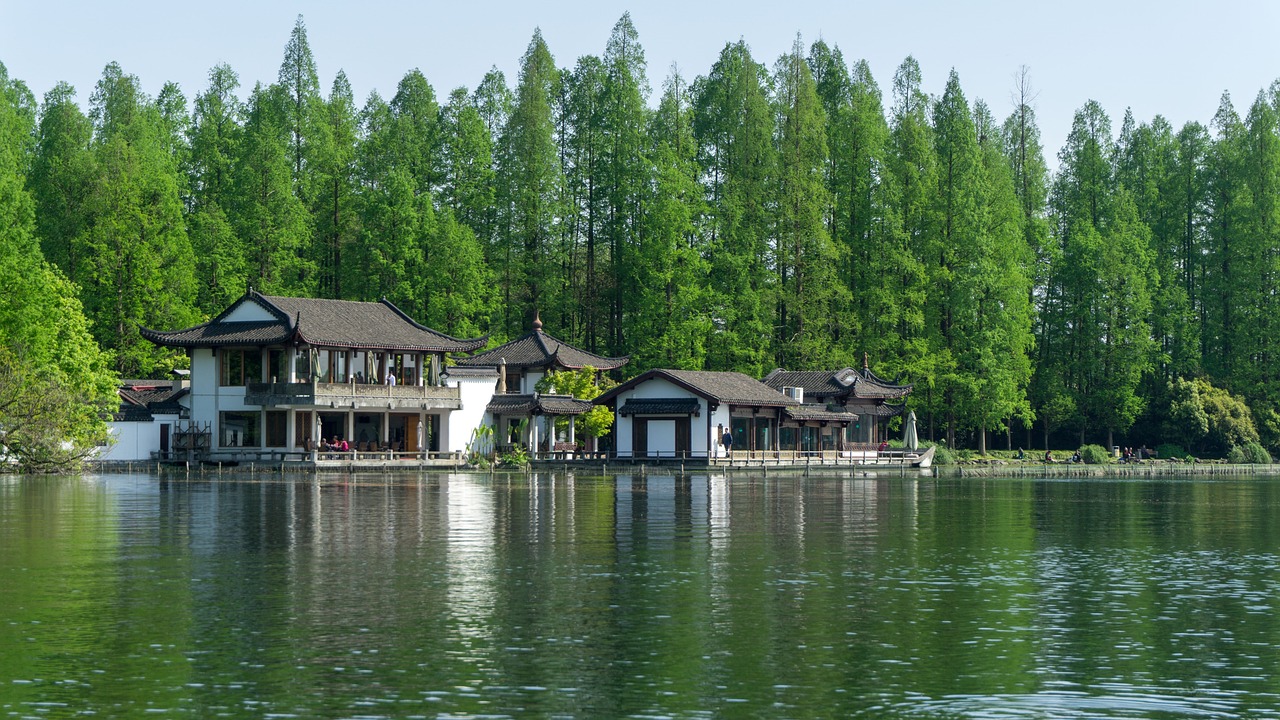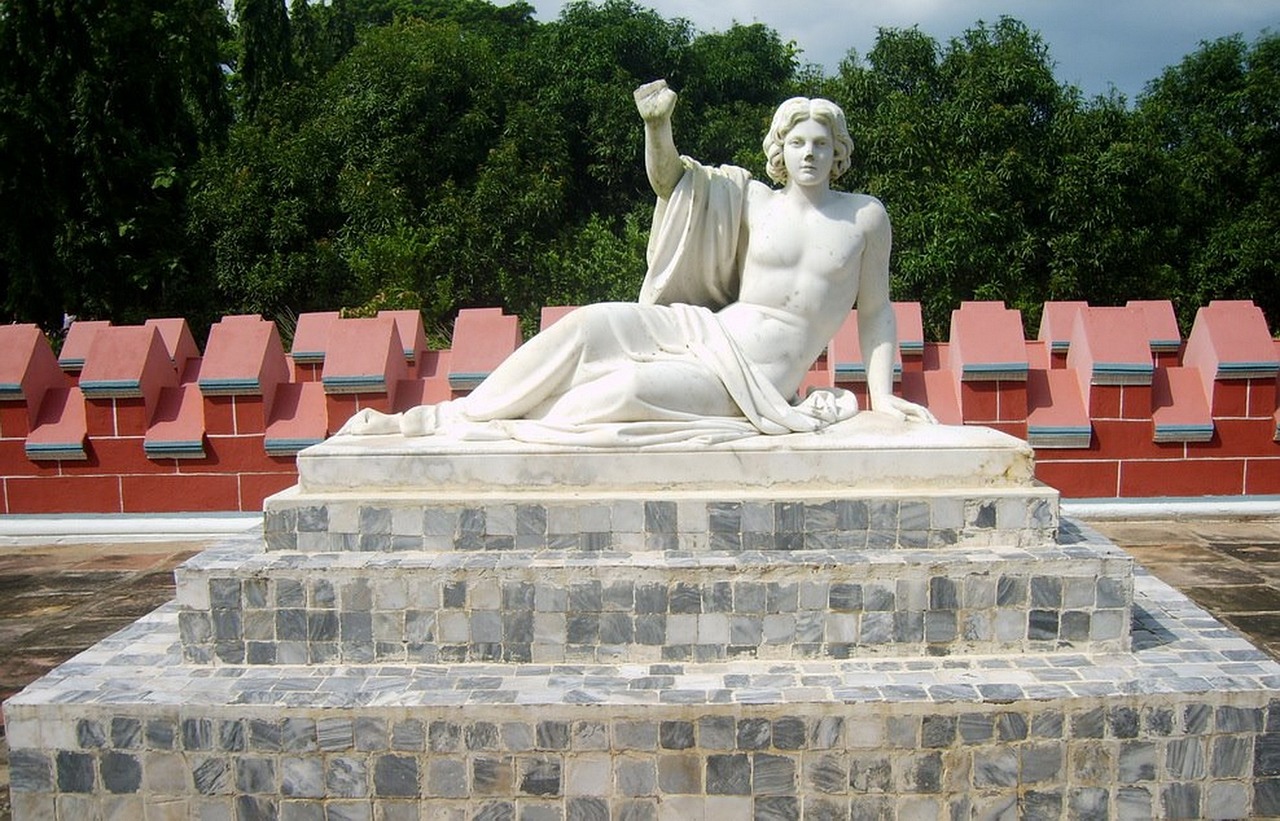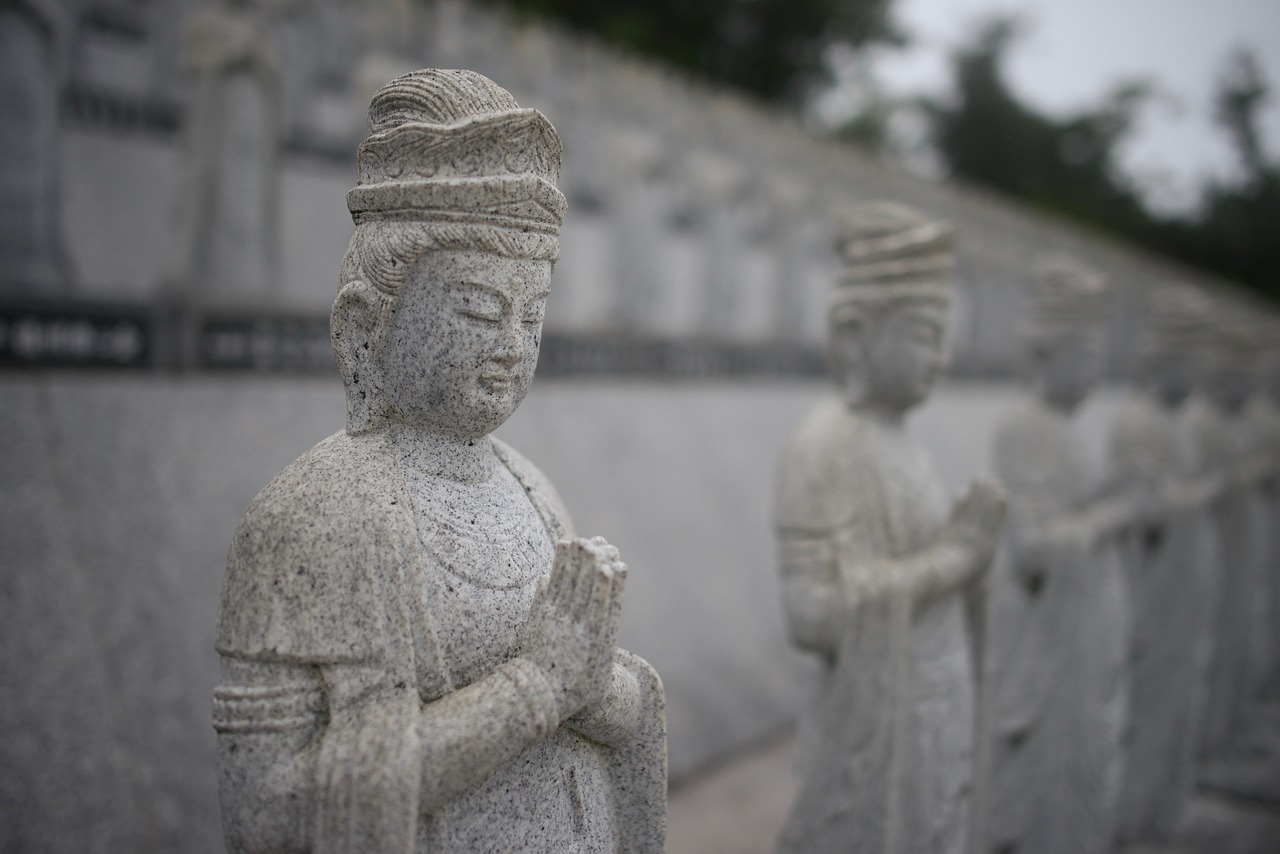This article delves into the rich and diverse history of West Bengal, tracing its evolution from ancient civilizations to its current status as a vibrant state in India.
1. Ancient Civilizations in West Bengal
The history of West Bengal commences with ancient civilizations, notably the Vanga Kingdom, which was renowned for its trade and cultural exchanges with neighboring regions. This kingdom laid the foundation for a thriving cultural heritage.
2. The Mauryan and Gupta Empires
During the Mauryan and Gupta periods, West Bengal emerged as a center of learning, art, and trade, significantly contributing to India’s cultural heritage. The influence of these empires can still be felt today.
- 2.1 Contributions to Art and Culture
- The Mauryan and Gupta rule led to advancements in sculpture, literature, and architecture, leaving a lasting legacy in West Bengal.
- Notable Artifacts: Archaeological findings from this era reveal intricate sculptures and inscriptions that highlight the artistic prowess of ancient Bengal.
- Literature and Philosophy: Prominent scholars and poets emerged during this period, enriching Bengali literature and philosophical thought, which continue to resonate today.
- 2.2 Trade and Economy
- West Bengal served as a vital trade hub during these empires, facilitating commerce through its rivers and ports, enhancing its economic significance.
3. The Medieval Period
The medieval era saw the rise of various dynasties, including the Sena dynasty, which played a crucial role in shaping the region’s socio-political landscape.
- 3.1 The Sena Dynasty
- The Sena rulers contributed to the spread of Hinduism and the establishment of significant temples, influencing local culture and religion.
- 3.2 Cultural Developments
- This period also witnessed the emergence of Bengali literature and the arts, laying the groundwork for future cultural advancements.
4. Colonial Era: British Rule in Bengal
The British colonization brought profound changes to West Bengal, impacting its economy, society, and political landscape.
- 4.1 The Bengal Renaissance
- The 19th century marked the Bengal Renaissance, a cultural and intellectual awakening that produced notable figures in literature, science, and social reform.
- 4.2 Impact on Society
- Colonial policies led to significant social changes, including the rise of nationalism and movements advocating for independence.
5. The Partition of Bengal
The partition of Bengal in 1905 and later in 1947 was a pivotal moment, leading to significant demographic changes and communal tensions.
- 5.1 Consequences of Partition
- The partition resulted in mass migrations and violence, reshaping the cultural and social fabric of West Bengal.
- 5.2 The Role of Leaders
- Prominent leaders emerged during this tumultuous time, advocating for the rights of displaced individuals and working towards communal harmony.
6. Post-Independence Developments
After India’s independence, West Bengal faced various challenges, including political upheaval and economic struggles, which shaped its modern identity.
- 6.1 Political Landscape
- The state became a focal point for political movements, with significant changes in governance and policy impacting its development.
- 6.2 Economic Transformation
- Efforts to revitalize the economy led to growth in sectors like agriculture, industry, and technology, contributing to West Bengal’s modernization.
7. Cultural Heritage and Festivals
West Bengal’s rich cultural heritage is celebrated through various festivals, art forms, and culinary traditions that reflect its diverse history.
- 7.1 Major Festivals
- Festivals like Durga Puja and Poila Baisakh showcase the state’s vibrant culture and community spirit, drawing visitors from around the world.
- 7.2 Art and Literature
- The state continues to be a hub for artistic expression, nurturing renowned poets, writers, and artists who contribute to its cultural legacy.
8. Modern Challenges and Opportunities
Today, West Bengal faces challenges such as urbanization and environmental issues, but also possesses opportunities for growth and development.
- 8.1 Urbanization Trends
- Rapid urbanization presents both challenges and opportunities for infrastructure and service delivery in cities like Kolkata.
- 8.2 Environmental Concerns
- Addressing environmental issues, including pollution and climate change, is crucial for sustainable development in the region.
9. Conclusion: The Future of West Bengal
West Bengal’s history is a testament to its resilience and cultural richness, shaping a promising future as it navigates contemporary challenges and opportunities.

1. Ancient Civilizations in West Bengal
The history of West Bengal is a tapestry woven from the threads of various ancient civilizations, with the Vanga Kingdom standing out as a significant early society. This kingdom, flourishing around the 6th century BCE, was renowned for its vibrant trade networks and cultural exchanges with neighboring regions, including parts of modern-day Bangladesh and India.
West Bengal’s strategic location along the Ganges River facilitated its role as a major trade hub. The Vanga Kingdom was not only engaged in commerce but also played a crucial role in the dissemination of ideas and culture. The region became a melting pot of influences from various cultures, leading to a rich and diverse social fabric.
| Key Aspects of the Vanga Kingdom | Details |
|---|---|
| Trade | Vanga was known for its trade in textiles, spices, and precious stones. |
| Cultural Exchange | Interactions with neighboring kingdoms led to a fusion of cultural practices. |
| Political Structure | Governed by a monarchy, with a well-defined administrative system. |
As the Vanga Kingdom evolved, it laid the groundwork for subsequent empires, including the Mauryan and Gupta Empires, which further enriched the cultural landscape of West Bengal. These empires contributed significantly to advancements in art, architecture, and philosophy, creating a legacy that can still be felt today.
In summary, the ancient civilizations of West Bengal, particularly the Vanga Kingdom, were instrumental in shaping the region’s history through their contributions to trade, culture, and governance. This foundation set the stage for the rich tapestry of history that would follow in the centuries to come.

2. The Mauryan and Gupta Empires
During the Mauryan and Gupta periods, West Bengal emerged as a vibrant center of learning, art, and trade, significantly shaping India’s cultural landscape. This era marked a profound transformation in the region, as it became a melting pot of ideas, creativity, and commerce.
2.1 Contributions to Art and Culture
The Mauryan and Gupta dynasties were instrumental in fostering a rich cultural environment. Under their patronage, West Bengal witnessed remarkable advancements in sculpture, literature, and architecture. The intricate sculptures and elaborate temples from this period are testaments to the artistic genius of the time.
- Notable Artifacts: Archaeological excavations have uncovered exquisite sculptures and inscriptions that reflect the artistic prowess of ancient Bengal. These artifacts serve as a window into the region’s rich history.
- Literature and Philosophy: This period also saw the emergence of prominent scholars and poets, such as Kalidasa, whose works continue to influence Bengali literature and philosophical thought.
2.2 Trade and Economy
West Bengal’s strategic location made it a crucial trade hub during the Mauryan and Gupta empires. The region’s extensive network of rivers and ports facilitated commerce, enhancing its economic significance. Merchants from various regions flocked to West Bengal, contributing to its prosperity and cultural exchanges.
In conclusion, the Mauryan and Gupta empires played a pivotal role in shaping West Bengal’s cultural and economic landscape. Their contributions to art, literature, and trade have left an indelible mark on the region, making it a vital part of India’s rich heritage.
2.1 Contributions to Art and Culture
The Mauryan and Gupta empires, which thrived between the 4th century BCE and the 6th century CE, played a pivotal role in shaping the cultural landscape of West Bengal. Their influence is particularly evident in the realms of sculpture, literature, and architecture, which collectively created a rich artistic legacy that continues to resonate today.
During the Mauryan period, particularly under Emperor Ashoka, there was a significant emphasis on art as a means of promoting Buddhism. This led to the creation of intricate sculptures and stupas that adorned the region. The famous Sarnath Lion Capital, which symbolizes the national emblem of India, is a testament to the artistic brilliance of this era. The use of stone carvings to depict religious narratives not only showcased the technical skills of artisans but also served as a medium for conveying spiritual teachings.
Transitioning into the Gupta period, often referred to as the Golden Age of India, there was a remarkable flourishing of literature and philosophy. Renowned scholars such as Kalidasa and Vatsyayana emerged, contributing timeless works that remain influential in the canon of Indian literature. The Gupta dynasty’s patronage of the arts led to the development of sophisticated literary forms, including poetry and drama, which enriched the cultural fabric of West Bengal.
Architecturally, the period saw the construction of grand temples and monuments, characterized by their stunning intricacies and designs. The Dashavatara Temple at Deogarh, with its exquisite carvings, exemplifies the architectural advancements of the time. These structures not only served religious purposes but also stood as symbols of the technological and artistic prowess of the era.
In summary, the contributions of the Mauryan and Gupta empires to art and culture in West Bengal have left an enduring legacy. Their advancements in sculpture, literature, and architecture not only reflect the historical context of their time but also continue to inspire contemporary artists and scholars, ensuring that the cultural heritage of the region remains vibrant and relevant.
2.1.1 Notable Artifacts
Archaeological excavations in West Bengal have uncovered a wealth of notable artifacts that showcase the region’s rich artistic heritage. These findings provide invaluable insights into the cultural and historical context of ancient Bengal, revealing the sophistication and creativity of its artisans.
- Intricate Sculptures: Among the most remarkable discoveries are the detailed sculptures carved from stone, showcasing various deities and mythological scenes. These sculptures reflect not only artistic talent but also the religious beliefs and practices of the time.
- Inscriptions: Inscriptions found on stone tablets and temple walls offer a glimpse into the language, scripts, and societal norms of ancient Bengal. They often include poetic verses and historical records that document the achievements of rulers and the cultural milieu.
- Terracotta Artifacts: The use of terracotta in creating figurines and pottery is another significant aspect of Bengal’s artistic legacy. These artifacts often depict daily life, animals, and religious symbols, providing a tangible connection to the past.
- Coins: Ancient coins unearthed from various sites indicate the region’s trade relations and economic prosperity. The designs and inscriptions on these coins reveal the influence of different dynasties and their contributions to the region’s history.
These artifacts not only highlight the artistic prowess of ancient Bengal but also serve as a testament to the region’s vibrant cultural landscape. The intricate details and craftsmanship found in these discoveries continue to inspire modern artists and historians alike.
In conclusion, the archaeological findings from ancient Bengal are a treasure trove of information, providing a deeper understanding of the region’s past. They remind us of the enduring legacy of creativity and innovation that has shaped West Bengal’s identity over the centuries.
2.1.2 Literature and Philosophy
The period of the Mauryan and Gupta empires marked a significant turning point in the evolution of Bengali literature and philosophical thought. This era witnessed the emergence of several prominent scholars and poets whose contributions have left an indelible mark on the cultural landscape of Bengal.
Among the notable figures was Kalidasa, often regarded as one of the greatest Sanskrit poets and dramatists. His works, characterized by their lyrical beauty and profound themes, laid the foundation for future literary pursuits in the region. The philosophical discourse of the time was enriched by thinkers such as Vishnu Sharma, who is credited with the Panchatantra, a collection of fables that impart moral lessons through engaging narratives.
Furthermore, the influence of Buddhism and Hinduism during this period fostered a culture of inquiry and introspection, leading to the development of various philosophical schools. The texts produced during this time not only reflected the societal norms but also challenged existing beliefs, paving the way for intellectual debates that resonate even today.
The poetic traditions of Bengal flourished, giving rise to the Baul and Bhakti movements, which emphasized love, devotion, and a deep connection with the divine. These movements encouraged a new form of expression that transcended the confines of traditional literature, integrating music and dance into their narratives.
As a result, the literary and philosophical advancements of this period continue to inspire contemporary writers and thinkers, highlighting the enduring legacy of Bengal’s intellectual heritage. The richness of this era serves as a reminder of the power of words and ideas to shape culture and society.
2.2 Trade and Economy
During the Mauryan and Gupta empires, West Bengal emerged as a crucial trade hub, leveraging its extensive network of rivers and access to the Bay of Bengal. This strategic location allowed for the seamless movement of goods, facilitating commerce that was vital for the economic prosperity of the region.
The rivers of West Bengal, particularly the Ganges and its tributaries, acted as natural highways, enabling merchants to transport products such as spices, textiles, and precious stones. The ports along the coast, including Chandraketugarh and later Kolkatta (formerly Calcutta), became bustling centers of trade, attracting traders from various parts of India and beyond.
As a result, West Bengal not only enhanced its economic significance but also fostered cultural exchanges between different regions. The trade routes facilitated the spread of ideas, art, and technology, contributing to the overall development of the region. The influx of diverse cultures enriched the local population, leading to a vibrant social fabric that still characterizes West Bengal today.
- Key Trade Goods:
- Spices
- Textiles
- Precious stones
- Major Trade Routes:
- River Ganges
- Coastal shipping routes
- Impact on Local Economy:
- Job creation in trade and shipping
- Growth of local markets
- Increased wealth and cultural exchange
The economic framework established during these empires laid the groundwork for future trade practices in West Bengal. As the region continued to evolve, its legacy as a trade center remained a pivotal aspect of its identity, shaping its economic landscape and cultural heritage for centuries to come.
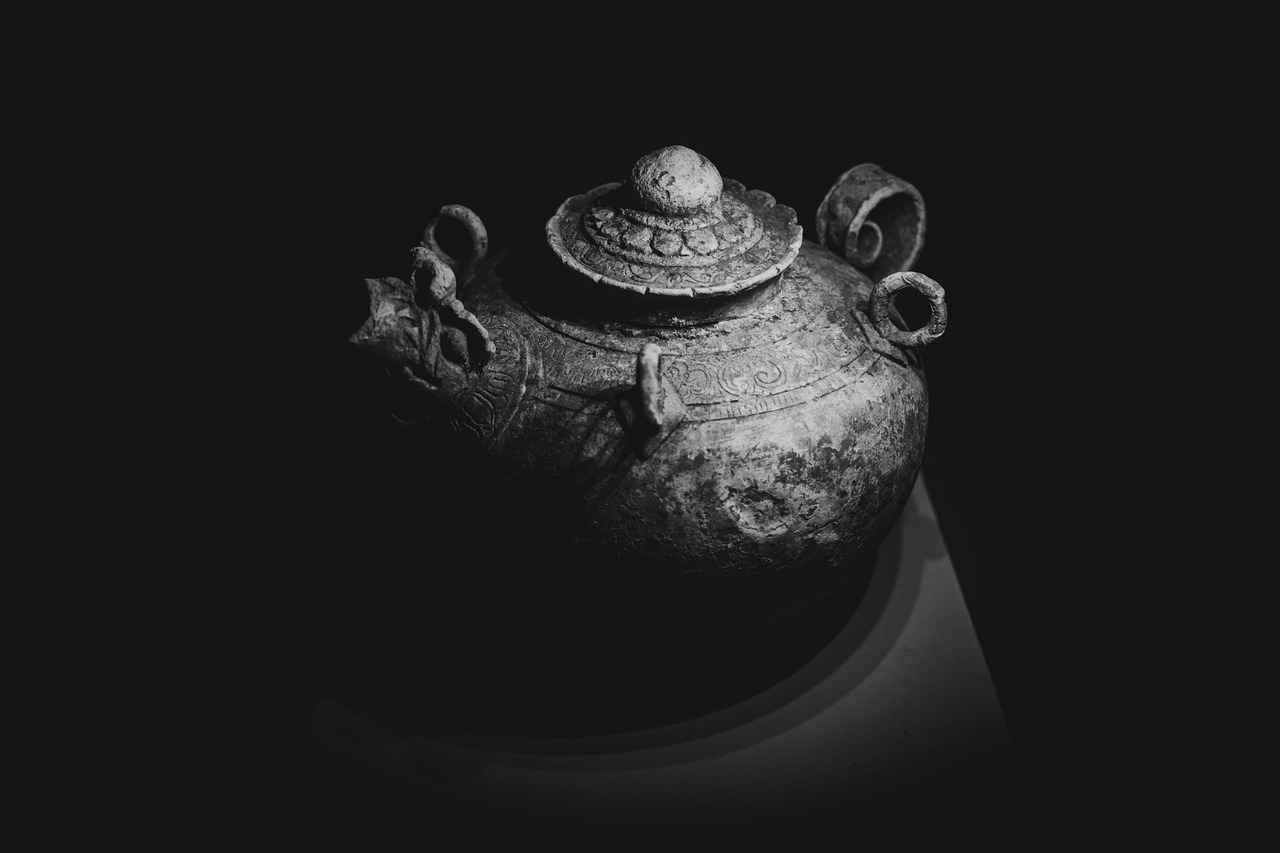
3. The Medieval Period
The Medieval Period in West Bengal was a transformative era that saw the emergence of powerful dynasties, notably the Sena dynasty, which significantly influenced the region’s socio-political landscape. This period, spanning from the 11th to the 13th centuries, was marked by the rise of feudalism, the expansion of trade, and the flourishing of culture and religion.
The Sena dynasty played a pivotal role in shaping the religious and cultural identity of Bengal. Under their rule, Hinduism was not only promoted but also deeply intertwined with the local culture. The Sena kings were known for their patronage of temples and religious institutions, which led to the construction of magnificent architectural marvels that still stand today. These temples became centers of worship and learning, fostering a sense of community and cultural pride among the local population.
In addition to religious contributions, the medieval period also witnessed significant advancements in literature and the arts. The influence of the Sena dynasty encouraged the development of Bengali literature, with poets and scholars emerging who would lay the groundwork for future literary movements. This cultural renaissance was characterized by the blending of local dialects and influences from Sanskrit, enriching the linguistic heritage of the region.
The Sena dynasty’s reign also marked a time of economic growth. The region became a hub for trade, with its rivers facilitating commerce and the exchange of goods. This economic prosperity allowed for the flourishing of various crafts and industries, contributing to the overall development of West Bengal.
In conclusion, the medieval period was a crucial chapter in the history of West Bengal. The legacy of the Sena dynasty continues to resonate in the region’s cultural, religious, and economic landscape, shaping its identity even in contemporary times. Understanding this era provides valuable insights into the rich tapestry of West Bengal’s history.
3.1 The Sena Dynasty
The Sena Dynasty played a pivotal role in the historical and cultural development of West Bengal during the medieval period. This dynasty, which ruled from the 11th to the 13th centuries, was instrumental in promoting Hinduism and establishing significant temples that have become cultural landmarks.
The Sena rulers were known for their patronage of religious institutions and their efforts to spread Hindu philosophy and practices across the region. They constructed numerous temples that not only served as places of worship but also as centers of social and cultural activities. These temples often featured intricate architectural designs and artistic sculptures, reflecting the rich heritage of the time.
| Temple Name | Location | Significance |
|---|---|---|
| Vaidyanath Temple | Birbhum | One of the oldest temples dedicated to Lord Shiva. |
| Jagannath Temple | Kolkata | Major pilgrimage site dedicated to Lord Jagannath. |
| Tarakeshwar Temple | Hooghly | Famous for its religious significance and annual fairs. |
In addition to temple construction, the Sena dynasty’s influence extended to the local culture. They integrated various cultural practices and traditions, leading to a unique blend of art, literature, and religious practices that shaped the identity of Bengal. The support for scholarly pursuits during their reign fostered an environment where literature and philosophy could thrive, resulting in the emergence of notable poets and thinkers.
Furthermore, the Sena rulers encouraged the development of regional languages and literature, which played a crucial role in the cultural renaissance of Bengal. Their emphasis on education and religious discourse helped solidify Hinduism’s presence in the region, influencing generations to come.
In conclusion, the Sena dynasty’s contributions to the spread of Hinduism and the establishment of temples were not only significant in a religious context but also played a crucial role in shaping the cultural landscape of West Bengal. Their legacy continues to be felt today, as these temples and cultural practices remain integral to the region’s identity.
3.2 Cultural Developments
Cultural Developments in West Bengal
The medieval period in West Bengal was a remarkable time that saw the significant emergence of Bengali literature and the arts. This era laid the groundwork for future cultural advancements, ultimately shaping the identity of the region. The flourishing of literature and artistic expression during this time was not merely a reflection of societal changes but also a catalyst for the cultural renaissance that followed.
One of the most notable aspects of this period was the rise of Bengali poetry and prose. Writers and poets began to explore themes of love, nature, and spirituality, often drawing inspiration from the rich cultural tapestry of Bengal. This literary movement was characterized by the use of the Bengali language, which gained prominence and became a vehicle for expressing the unique experiences and aspirations of the people.
Key Figures in Bengali Literature
- Chandidas – A prominent poet whose works celebrated love and devotion.
- Jayadeva – Known for his epic poem, Gita Govinda, which has had a lasting impact on Bengali literature.
- Ramprasad Sen – A mystic poet whose devotional songs resonated with the masses.
In addition to literature, the arts also flourished during this period. Artists began to experiment with various forms, including painting, sculpture, and music. The influence of Hindu mythology and local traditions became evident in the artworks, which often depicted scenes from ancient texts and folklore.
Impact on Future Generations
The cultural developments of the medieval period set the stage for the Bengal Renaissance in the 19th century, where the seeds sown during this time blossomed into a full-fledged movement that would redefine Bengali identity. The emphasis on education, arts, and social reform during the Renaissance can be traced back to the literary and artistic foundations laid in the medieval era.
In conclusion, the emergence of Bengali literature and the arts during the medieval period was a pivotal moment in West Bengal’s history. It not only enriched the cultural landscape of the region but also paved the way for future advancements that continue to influence Bengali society today.
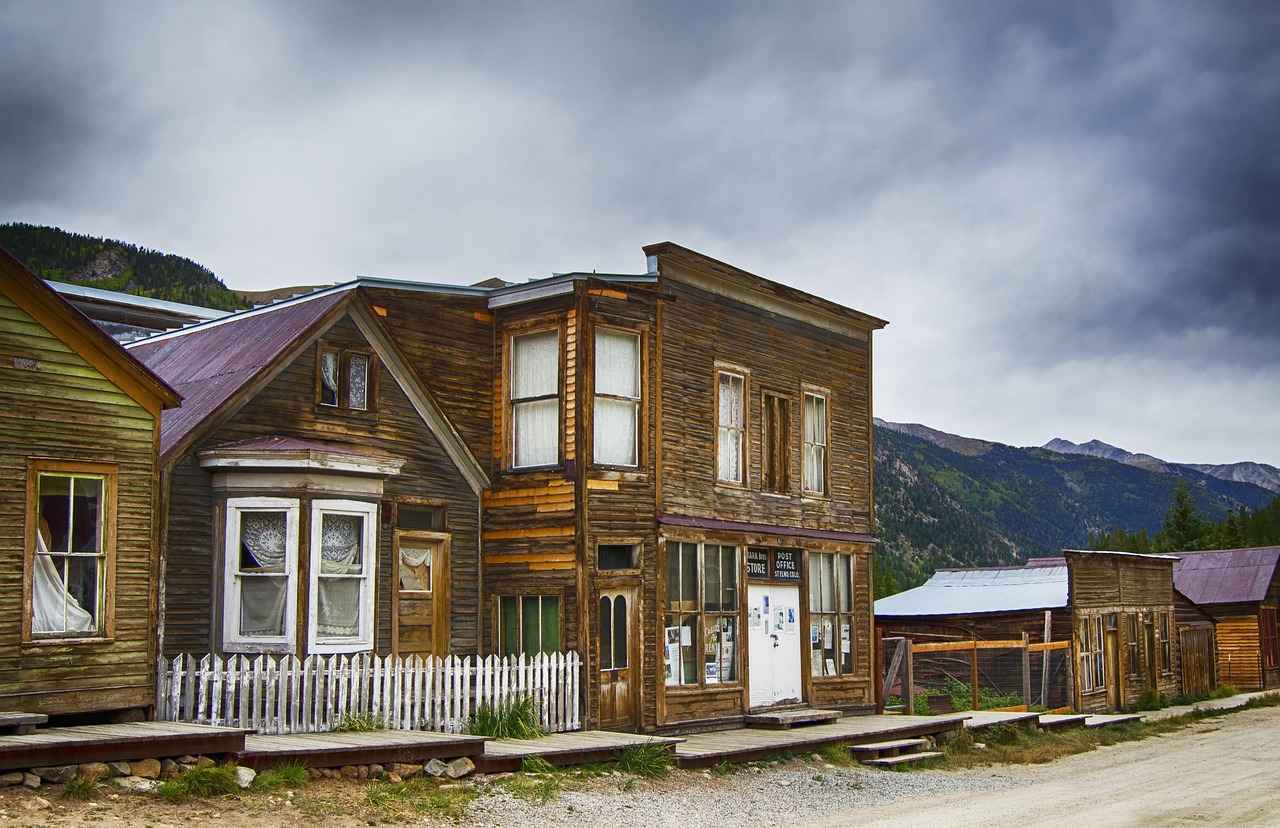
4. Colonial Era: British Rule in Bengal
The Colonial Era: British Rule in Bengal
The British colonization of Bengal marked a significant turning point in the region’s history, leading to profound changes in its economy, society, and political landscape. From the late 18th century until India gained independence in 1947, Bengal underwent transformations that shaped its modern identity.
One of the most notable impacts of British rule was on the economy. The introduction of new agricultural practices and cash crops aimed at export significantly altered traditional farming. This shift led to increased profitability for British merchants but often left local farmers struggling to sustain their livelihoods. The imposition of heavy taxes and the exploitation of resources further exacerbated economic disparities.
In terms of society, British rule brought about significant cultural exchanges. The establishment of educational institutions, such as Calcutta University, fostered a new wave of intellectual thought, leading to the Bengal Renaissance. This cultural movement produced prominent figures in literature, science, and social reform, who began to challenge colonial norms and advocate for social justice.
Politically, the British administration implemented a system of governance that marginalized local leaders and disrupted traditional power structures. This disenfranchisement sowed the seeds of nationalism, as various movements emerged to oppose colonial rule. The rise of political consciousness among Bengalis played a crucial role in the fight for independence.
In conclusion, the British colonization of Bengal was a complex period characterized by both advancements and challenges. The economic exploitation, cultural awakening, and political mobilization during this era laid the groundwork for the future trajectory of West Bengal, influencing its societal norms and governance long after independence.
4.1 The Bengal Renaissance
The Bengal Renaissance of the 19th century was a remarkable period that ignited a profound cultural and intellectual awakening in Bengal, significantly influencing the socio-political landscape of India. This era was characterized by a surge in creativity and reform, producing a plethora of notable figures across various fields, including literature, science, and social reform.
During this transformative time, Bengal became a hub of intellectual discourse, with many scholars and thinkers emerging to challenge traditional norms. The Renaissance was marked by the contributions of luminaries such as Rabindranath Tagore, the first non-European Nobel laureate in Literature, who enriched Bengali literature with his poetry and songs. His works often reflected the evolving identity of Bengal and its cultural aspirations.
In the realm of science, figures like Jagadish Chandra Bose, a pioneering biologist and physicist, made significant strides that laid the groundwork for modern scientific inquiry in India. His research in plant physiology and wireless communication showcased the innovative spirit of the time.
Moreover, the Bengal Renaissance was not solely confined to the arts and sciences; it also played a crucial role in social reform. Reformers such as Iswarchandra Vidyasagar advocated for women’s rights and education, challenging the rigid social structures of the time. Their efforts contributed to a gradual shift towards a more equitable society.
This cultural revival also saw the establishment of institutions like the Bengal School of Art, which fostered a new artistic movement that blended traditional Indian art with Western influences. This fusion created a unique aesthetic that resonated with the evolving cultural identity of Bengal.
In conclusion, the Bengal Renaissance was a significant chapter in the history of West Bengal, marked by a dynamic interplay of art, science, and social reform. Its legacy continues to inspire contemporary movements for cultural and social progress, highlighting the enduring impact of this vibrant period.
4.2 Impact on Society
The colonial era in West Bengal was marked by profound social transformations that reshaped the region’s cultural and political landscape. The imposition of British rule not only altered economic structures but also catalyzed a surge in nationalist sentiments and movements advocating for independence. As colonial policies took root, they created a fertile ground for social change, prompting various segments of society to mobilize for their rights and identity.
- Emergence of Nationalism: The oppressive nature of colonial rule led to the awakening of a collective consciousness among the Bengali populace. Intellectuals and political leaders began to articulate the need for self-governance, leading to the formation of several nationalist organizations.
- Social Reform Movements: The colonial period also saw the rise of social reform movements aimed at addressing issues such as caste discrimination and women’s rights. Leaders like Raja Ram Mohan Roy and Ishwar Chandra Vidyasagar played pivotal roles in advocating for social justice and reform.
- Role of Education: The British introduced a new education system that, although aimed at creating a compliant workforce, inadvertently fostered a class of educated Indians who began to question colonial authority. This educated elite became instrumental in the independence movement.
- Art and Literature as Resistance: The cultural renaissance during this period was characterized by a flourishing of literature and the arts. Writers and poets used their craft to challenge colonial narratives and inspire a sense of pride in Bengali identity.
In conclusion, the impact of colonial policies on society in West Bengal was multifaceted, leading to the rise of nationalism and a strong desire for independence. The struggles and movements that emerged during this time laid the groundwork for future generations, ultimately contributing to India’s freedom.

5. The Partition of Bengal
The Partition of Bengal in 1905 and later in 1947 marked a significant turning point in the history of the region, leading to profound demographic shifts and escalating communal tensions. This event not only reshaped the political landscape but also had lasting effects on the cultural and social fabric of Bengal.
Initially, the partition in 1905 was motivated by British colonial interests, aiming to divide and rule by creating religious divisions. The eastern part of Bengal was separated from the western part, which was predominantly Hindu. This division sparked widespread protests and was reversed in 1911 due to the strong opposition from the Indian National Congress and local leaders.
The more consequential partition occurred in 1947, coinciding with India’s independence from British rule. This partition was based on religious lines, creating East Pakistan (now Bangladesh) and India. The decision led to one of the largest mass migrations in human history, with millions of people displaced. Communal violence erupted, resulting in the tragic loss of countless lives and deep-rooted animosities between communities.
| Year | Event | Impact |
|---|---|---|
| 1905 | First Partition of Bengal | Protests led to its reversal in 1911 |
| 1947 | Partition of India | Mass migrations and communal violence |
The aftermath of the 1947 partition saw the emergence of prominent leaders who worked tirelessly to advocate for the rights of the displaced. Figures such as Mahatma Gandhi and Jawaharlal Nehru played crucial roles in attempting to restore peace and promote communal harmony amidst the chaos.
In conclusion, the partition of Bengal serves as a stark reminder of the fragility of communal harmony and the complexities of identity in a diverse nation. Understanding this history is essential for fostering a sense of unity and addressing the lingering issues that arose from these tumultuous events.
5.1 Consequences of Partition
The partition of Bengal in 1947 was a momentous event that not only altered the political landscape of the region but also had profound social and cultural repercussions. The consequences of partition were felt deeply across communities, leading to a wave of mass migrations and significant violence that reshaped the very fabric of West Bengal.
As the borders were redrawn, millions found themselves on the wrong side of the line, resulting in one of the largest migrations in human history. Families were uprooted from their ancestral homes, often leaving behind everything they had built over generations. This movement was marked by chaos and fear, as communities that had coexisted for centuries were suddenly divided by religious and political ideologies.
- Mass Migrations: An estimated 10-15 million people migrated, with Hindus moving to India and Muslims to Pakistan. This migration was not merely a relocation; it was a forced exodus filled with trauma.
- Violence and Conflict: The partition sparked widespread communal riots, leading to the deaths of hundreds of thousands. The violence was brutal, with families torn apart and deep-seated animosities taking root.
- Cultural Displacement: The migration resulted in a loss of cultural heritage. Many traditions, languages, and practices were either abandoned or diluted as communities struggled to adapt to new environments.
Moreover, the societal fabric of West Bengal was irrevocably transformed. The influx of refugees led to demographic changes, creating a diverse yet complex social landscape. The challenges of integrating these communities into the existing social order were immense and often contentious.
In the aftermath, various leaders emerged, advocating for the rights of the displaced and striving to restore harmony. Their efforts highlighted the resilience of the human spirit amid adversity, as they worked towards rebuilding a sense of community and belonging.
In conclusion, the consequences of the partition were not merely historical events; they left lasting scars on the collective memory of West Bengal, influencing its cultural and social dynamics for decades to come. Understanding these impacts is crucial for comprehending the region’s contemporary challenges and its path forward.
5.2 The Role of Leaders
During the tumultuous periods surrounding the Partition of Bengal, a host of prominent leaders emerged who played critical roles in advocating for the rights of displaced individuals. These leaders not only sought to address the immediate needs of those affected by the upheaval but also worked tirelessly towards fostering communal harmony amidst widespread chaos and violence.
One of the key figures was Rabindranath Tagore, a literary giant and social reformer, who used his influence to promote peace and understanding between communities. His writings and public speeches often emphasized the importance of unity and compassion, urging people to look beyond their differences. Tagore’s call for a harmonious coexistence resonated deeply during a time when the socio-political landscape was fraught with tension.
Similarly, Netaji Subhas Chandra Bose emerged as a pivotal leader, advocating for the rights of the marginalized and displaced. His vision for an independent India included the idea of a society where all communities could thrive together. Bose’s leadership during the Indian National Movement inspired many to join the struggle for independence, fostering a sense of collective identity among diverse groups.
Moreover, Mahatma Gandhi played an instrumental role in promoting non-violence and civil disobedience as means to address injustices faced by displaced individuals. His philosophy encouraged peaceful protests and dialogue, which were crucial in mitigating communal tensions. Gandhi’s emphasis on ahimsa (non-violence) and satyagraha (truth-force) provided a framework for individuals to advocate for their rights without resorting to violence.
As these leaders rallied communities to stand together, they not only addressed the immediate crises but also laid the groundwork for a more inclusive society. Their efforts highlight the importance of leadership in times of upheaval, showcasing how advocacy for the rights of the vulnerable can pave the way for lasting change.

6. Post-Independence Developments
After India’s independence in 1947, West Bengal encountered a myriad of challenges that significantly influenced its trajectory and identity. The political landscape became increasingly complex, marked by upheaval and the emergence of various movements that sought to address the needs and aspirations of the populace.
In the initial years following independence, West Bengal grappled with the aftermath of the Partition, which had led to substantial population displacement and communal strife. This period was characterized by a struggle to create a stable governance structure amidst rising tensions. Political parties began to take shape, with the Left Front coalition gaining prominence in the late 1970s, fundamentally altering the state’s political dynamics.
The economic condition of West Bengal was equally challenging. The state faced significant industrial decline, particularly in the jute and tea sectors, which had been the backbone of its economy. To counteract these economic struggles, the government initiated various reforms aimed at revitalizing industry and agriculture. Efforts were made to attract investment and modernize infrastructure, leading to a gradual transformation of the economic landscape.
As the decades progressed, West Bengal began to embrace new opportunities. The information technology sector emerged as a key player, with cities like Kolkata becoming hubs for tech startups and innovation. This shift not only provided new employment opportunities but also contributed to the state’s economic diversification.
Furthermore, the cultural tapestry of West Bengal continued to thrive, with a resurgence in literature, arts, and festivals. The state’s rich cultural heritage has played a vital role in shaping its modern identity, fostering a sense of pride among its residents.
In conclusion, the post-independence era has been a period of transformation for West Bengal. Despite facing numerous challenges, the state’s resilience and adaptability have paved the way for a promising future, characterized by a blend of tradition and modernity.
6.1 Political Landscape
Political Landscape of West Bengal
The political landscape of West Bengal has been a dynamic and transformative aspect of its history, especially in the post-independence era. The state has become a focal point for political movements, reflecting the aspirations and struggles of its diverse population. This evolution in governance and policy has significantly impacted the development trajectory of West Bengal.
In the early years following independence, West Bengal was characterized by a struggle for political identity, with various parties vying for influence. The rise of the Left Front in the late 1970s marked a significant shift, as the Communist Party of India (Marxist) (CPI(M)) established a stronghold in the state. This period saw the implementation of several progressive policies aimed at land reforms and social welfare, which were pivotal in reshaping the rural landscape.
As political ideologies evolved, the late 1990s and early 2000s witnessed a resurgence of Trinamool Congress, led by Mamata Banerjee. This shift was not merely a change in leadership but a reflection of the changing aspirations of the people, particularly the youth and marginalized communities. The Trinamool Congress introduced new policies focusing on infrastructure development, education, and health care, which aimed to revitalize the state’s economy.
The political environment in West Bengal is often marked by vibrant grassroots movements, with citizens actively participating in the democratic process. Issues such as land rights, labor reforms, and social justice have mobilized large segments of the population, leading to significant policy changes. The state’s political landscape is also influenced by its rich cultural heritage, which plays a crucial role in shaping public opinion and political discourse.
Overall, the political landscape of West Bengal is characterized by its complexity and diversity, reflecting the multifaceted nature of its society. As the state continues to evolve, the interplay between governance, policy, and public engagement will undoubtedly shape its future trajectory.
6.2 Economic Transformation
The economic landscape of West Bengal has undergone significant changes in recent years, driven by a series of strategic initiatives aimed at revitalizing various sectors. The state’s commitment to fostering growth in agriculture, industry, and technology has been pivotal in its modernization journey.
In the realm of agriculture, West Bengal has leveraged its fertile land and favorable climate to enhance productivity. The introduction of modern farming techniques and high-yield crop varieties has not only increased output but also improved the livelihoods of farmers. Government initiatives, such as subsidies for fertilizers and irrigation projects, have further empowered the agricultural sector. This focus on agriculture has not only ensured food security but has also positioned the state as a significant contributor to India’s agrarian economy.
The industrial sector has also seen a renaissance, with the establishment of numerous manufacturing units and small-scale industries. The government has implemented policies to attract investment, leading to the growth of sectors such as textiles, jute, and engineering. The emergence of industrial parks and clusters has facilitated collaboration among businesses, fostering innovation and competitiveness. These developments have created job opportunities and stimulated local economies, contributing to the overall growth of the state.
Moreover, the technology sector has become a cornerstone of West Bengal’s modernization efforts. The state has positioned itself as a hub for information technology and software development, attracting both national and international companies. Initiatives to promote startups and entrepreneurship have further fueled innovation, enabling young professionals to contribute to the digital economy. The rise of tech parks and incubation centers has provided a conducive environment for growth, making West Bengal a key player in the tech landscape of India.
In conclusion, the concerted efforts to revitalize the economy of West Bengal have resulted in impressive growth across multiple sectors. The synergy between agriculture, industry, and technology not only contributes to the state’s modernization but also enhances its resilience in the face of future challenges. As West Bengal continues to evolve, its economic transformation will play a crucial role in shaping its identity and ensuring sustainable development.
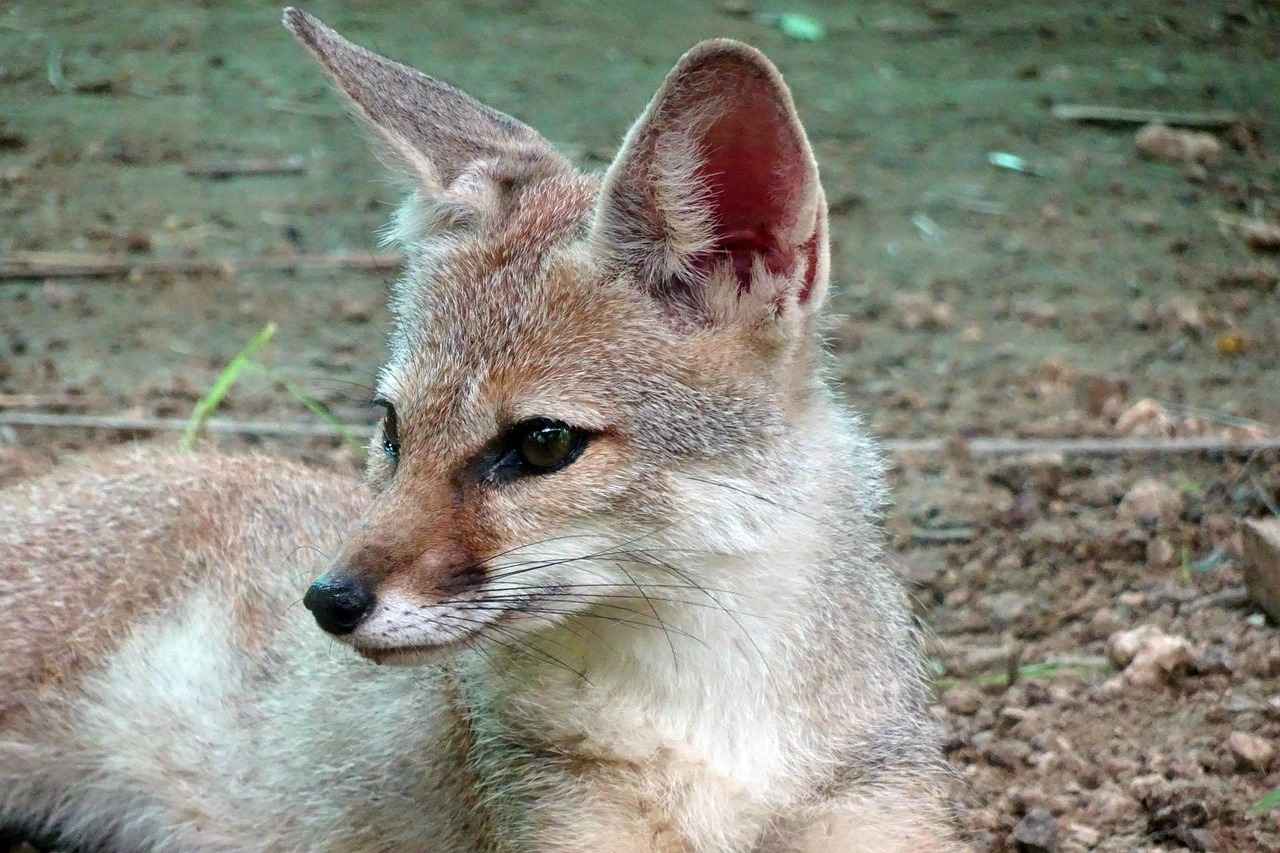
7. Cultural Heritage and Festivals
West Bengal is a state that epitomizes the essence of cultural diversity in India. Its rich cultural heritage is celebrated through a myriad of festivals, artistic expressions, and culinary traditions that reflect its vibrant history. This section delves into the various aspects of West Bengal’s cultural heritage and the significance of its festivals.
| Festival | Significance | Time of Celebration |
|---|---|---|
| Durga Puja | Celebration of Goddess Durga’s victory over evil | September/October |
| Poila Baisakh | Bengali New Year | April 14 |
| Viswakarma Puja | Worship of the divine architect | September |
| Jagaddhatri Puja | Celebration of Goddess Jagaddhatri | October/November |
The most prominent festival, Durga Puja, is not just a religious observance but a grand celebration that brings together people from all walks of life. Streets transform into vibrant art galleries with beautifully crafted idols and elaborate decorations. The festival showcases traditional music, dances, and food, drawing visitors from across the globe.
Another significant occasion is Poila Baisakh, marking the start of the Bengali year. This day is celebrated with feasts, cultural performances, and family gatherings, emphasizing the importance of community and tradition.
West Bengal’s artistic legacy is equally remarkable, with renowned poets, writers, and artists emerging from the region. The state nurtures a thriving cultural scene, where literature and art continue to flourish, reflecting the sentiments and aspirations of its people.
In conclusion, West Bengal’s cultural heritage, encapsulated in its festivals and artistic expressions, is a testament to its rich history and communal harmony. These celebrations not only preserve traditions but also foster a sense of unity among diverse communities, making West Bengal a truly unique cultural hub.
7.1 Major Festivals
West Bengal is renowned for its rich cultural heritage and vibrant festivals that reflect the state’s diversity and community spirit. Among the most celebrated are Durga Puja and Poila Baisakh, which not only showcase the artistic and spiritual dimensions of Bengali culture but also attract visitors from all over the globe.
| Festival | Significance | Duration | Key Activities |
|---|---|---|---|
| Durga Puja | Celebration of Goddess Durga’s victory over the buffalo demon Mahishasura | 5-10 days, typically in September-October | Idol immersion, cultural performances, community feasts |
| Poila Baisakh | Marking the Bengali New Year | 1 day, usually in mid-April | Traditional meals, fairs, and cultural events |
During Durga Puja, elaborate pandals (temporary structures) are constructed, showcasing intricate designs and themes that often reflect contemporary issues or historical narratives. The festival fosters a sense of unity as communities come together to celebrate with music, dances, and theatrical performances, creating a festive atmosphere throughout the state.
Poila Baisakh, on the other hand, is a time for new beginnings, where families come together to celebrate with traditional foods, including panta bhat and hilsa fish. The day is filled with cultural programs, parades, and fairs, highlighting the artistic talents of local artisans and performers.
These festivals not only serve as a means of celebrating cultural identity but also play a vital role in promoting tourism, as people from various backgrounds visit West Bengal to experience its unique traditions and community bonding.
7.2 Art and Literature
Art and Literature in West Bengal have long been intertwined, creating a vibrant tapestry that reflects the state’s rich cultural heritage. This region, known for its artistic endeavors, continues to be a nurturing ground for poets, writers, and visual artists, all of whom contribute significantly to its cultural legacy.
West Bengal’s artistic expression is deeply rooted in its history, with influences ranging from ancient civilizations to modern movements. The state has produced a plethora of literary giants, including Rabindranath Tagore, the first non-European Nobel laureate in Literature, and Sarat Chandra Chattopadhyay, whose works resonate with the struggles of the common man.
In addition to literature, the visual arts have flourished in West Bengal. The Kalighat paintings, originating from the 19th century, are a testament to the region’s artistic innovation, combining traditional themes with contemporary issues. Furthermore, the annual Kolkata Art Fair showcases emerging talents and established artists, providing a platform for artistic dialogue and collaboration.
West Bengal also celebrates its literary heritage through various festivals, such as the Kolkata Book Fair, which attracts book lovers and authors from across the globe. This event not only promotes reading but also fosters a sense of community among literature enthusiasts.
Moreover, the state’s commitment to nurturing artistic talent is evident in its educational institutions, such as the Rabindra Bharati University and the College of Art and Craft, which focus on developing the next generation of artists and writers.
In conclusion, the artistic landscape of West Bengal is a dynamic blend of tradition and modernity, continually evolving while honoring its roots. The contributions of its poets, writers, and artists not only enrich the cultural fabric of the state but also position West Bengal as a vital hub for artistic expression in India.
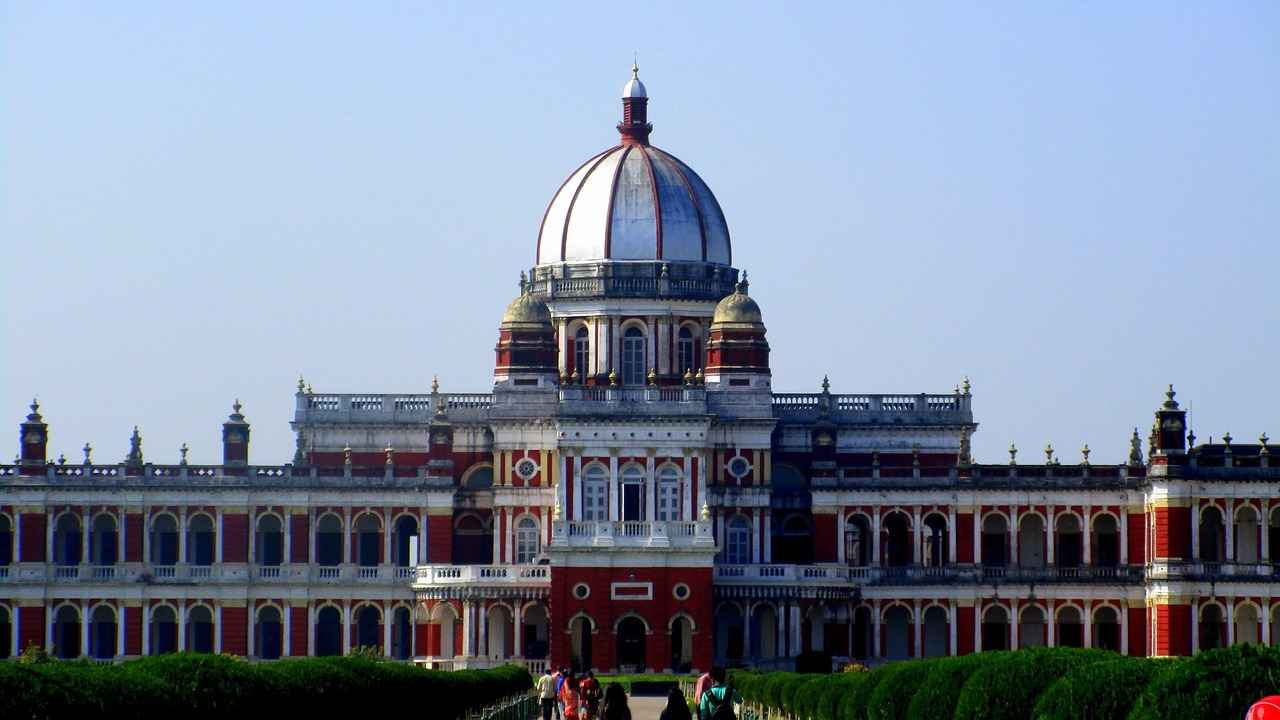
8. Modern Challenges and Opportunities
Modern Challenges and Opportunities
Today, West Bengal stands at a crossroads, grappling with significant challenges while simultaneously embracing opportunities for growth and development. The state’s rapid urbanization has led to a surge in population density, particularly in metropolitan areas like Kolkata. This influx has resulted in increased demand for housing, transportation, and public services, creating a pressing need for effective urban planning and infrastructure development.
Furthermore, environmental issues such as pollution, deforestation, and climate change are becoming increasingly critical. The Ganges River, a lifeline for millions, faces severe pollution challenges that threaten both biodiversity and the health of local communities. Addressing these environmental concerns is essential for ensuring sustainable development and improving the quality of life for residents.
However, the challenges also present unique opportunities. The state government and various organizations are actively working on innovative solutions to tackle these issues. For instance, investments in green technology and sustainable urban planning can help create a more resilient infrastructure. Moreover, the rise of digital technology offers the potential to enhance service delivery, making it easier for citizens to access essential resources.
In addition, West Bengal boasts a rich cultural heritage and a strong educational framework, which can be leveraged to foster economic growth. By promoting tourism and supporting local industries, the state can create new job opportunities and strengthen its economy.
In summary, while West Bengal faces significant challenges related to urbanization and environmental sustainability, it also has the potential to harness these challenges as opportunities for transformative growth. By focusing on innovative solutions and sustainable practices, West Bengal can pave the way for a brighter future.
8.1 Urbanization Trends
Urbanization Trends in Kolkata: Challenges and Opportunities
The rapid pace of urbanization in cities like Kolkata is reshaping the landscape of urban living, presenting a mix of challenges and opportunities for infrastructure and service delivery. As the population swells, the demand for essential services such as housing, transportation, and sanitation increases dramatically.
- Population Growth: Kolkata is witnessing a significant influx of people from rural areas seeking better job prospects and living conditions. This population surge puts immense pressure on existing infrastructure.
- Infrastructure Development: The need for robust infrastructure has never been more critical. Projects aimed at improving roads, public transport, and utilities are underway, yet the pace often lags behind demand.
- Housing Shortage: With the rising population, there is a growing demand for affordable housing. The challenge lies in balancing development with sustainability and ensuring that new housing projects are accessible to all.
- Environmental Impact: Urbanization contributes to environmental degradation. Issues such as air and water pollution, waste management, and loss of green spaces need urgent attention to create a sustainable urban environment.
Despite these challenges, urbanization also offers several opportunities:
- Economic Growth: The expansion of urban areas can lead to increased economic activity, job creation, and innovation as cities become hubs for business and entrepreneurship.
- Smart City Initiatives: The government is investing in smart city projects that leverage technology to enhance service delivery, improve traffic management, and increase public safety.
- Community Engagement: Urbanization encourages community participation in decision-making processes, fostering a sense of ownership and responsibility among residents.
In conclusion, while rapid urbanization in Kolkata presents significant challenges, it also opens doors for transformative opportunities. By addressing these issues with innovative solutions, the city can pave the way for a more sustainable and inclusive urban future.
8.2 Environmental Concerns
Environmental concerns have become a pressing issue in West Bengal, as the region grapples with the dual challenges of pollution and climate change. These environmental issues are not just local problems; they have far-reaching implications for sustainable development and the well-being of the population.
West Bengal, with its rich biodiversity and numerous water bodies, faces significant threats from industrial pollution, urban waste, and agricultural runoff. The Ganges River, which flows through the state, is one of the most polluted rivers in the world. Efforts to combat this pollution are crucial, as the health of millions depends on the quality of water and air.
- Pollution Sources:
- Industrial effluents
- Household waste
- Agricultural chemicals
- Climate Change Impact:
- Increased flooding and cyclones
- Rising sea levels affecting coastal areas
- Changes in agricultural productivity
Addressing these challenges requires a multi-faceted approach. The West Bengal government has initiated several programs aimed at reducing pollution and enhancing environmental sustainability. For instance, the Green Bengal Initiative focuses on afforestation, waste management, and promoting renewable energy sources.
Moreover, community involvement is essential. Local organizations and citizens can play a pivotal role in advocating for environmental protection and implementing sustainable practices in their daily lives. Education and awareness campaigns can empower individuals to contribute to environmental conservation efforts.
In conclusion, tackling environmental concerns in West Bengal is vital for ensuring a sustainable future. By addressing pollution and adapting to climate change, the region can foster a healthier environment and promote sustainable development for generations to come.
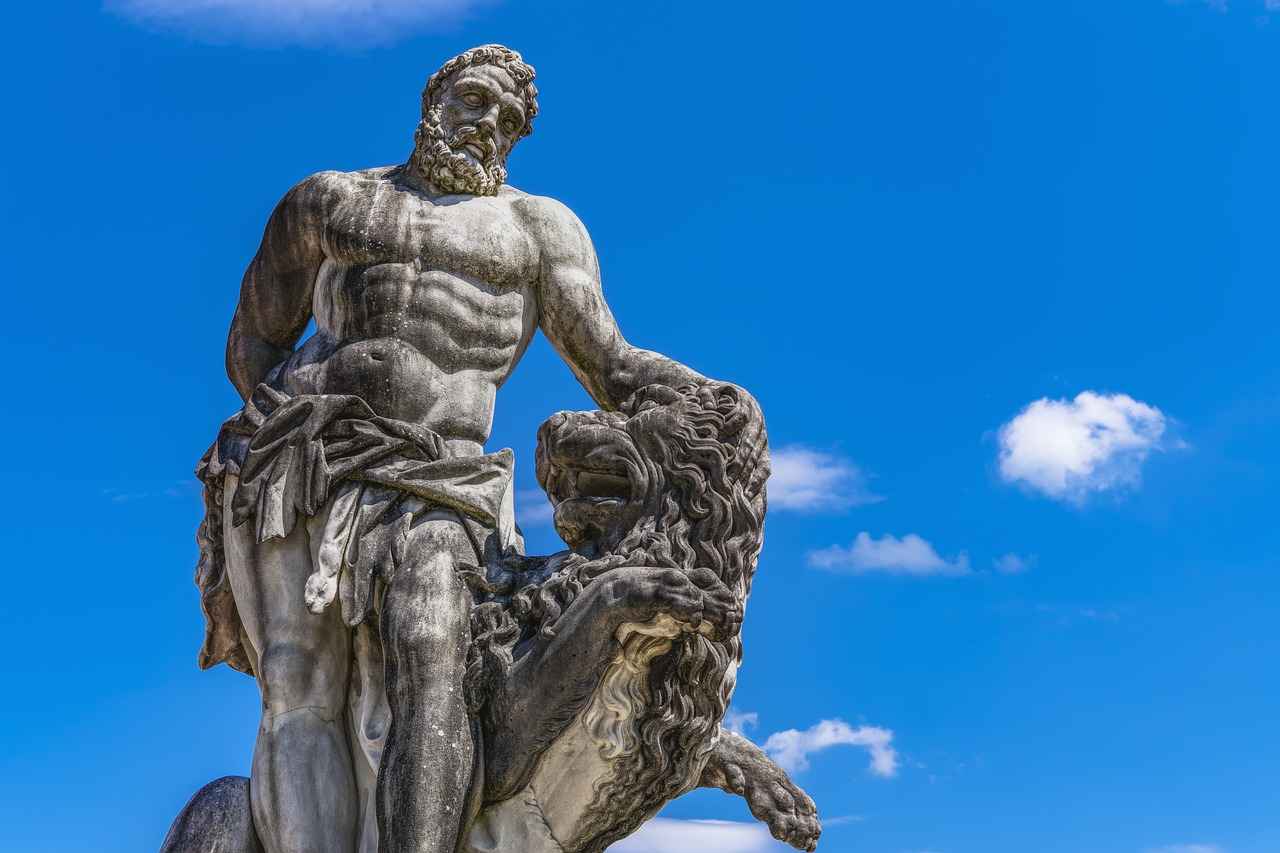
9. Conclusion: The Future of West Bengal
The Future of West Bengal
West Bengal’s history is a testament to its resilience and cultural richness, shaping a promising future as it navigates contemporary challenges and opportunities. The state, with its vibrant traditions and diverse communities, is poised to leverage its historical strengths in the face of modern-day adversities.
As West Bengal moves forward, it faces significant challenges, including urbanization, environmental concerns, and the need for economic revitalization. Urban centers like Kolkata are expanding rapidly, leading to issues such as overcrowding and inadequate infrastructure. To address these challenges, the state government is focusing on sustainable urban planning and development strategies that prioritize green spaces and efficient public transport systems.
Moreover, environmental issues such as pollution and climate change are pressing concerns that require immediate attention. Initiatives aimed at enhancing environmental sustainability, such as promoting renewable energy and improving waste management, are gaining traction. These efforts not only aim to protect the natural beauty of West Bengal but also to create a healthier living environment for its residents.
Economically, West Bengal has the potential to emerge as a leader in various sectors, including technology, tourism, and agriculture. The state is home to a rich agricultural landscape, which can be further developed through modern techniques and sustainable practices. Additionally, the promotion of tourism, particularly cultural tourism, can harness the state’s rich heritage and attract visitors from around the globe.
In conclusion, while West Bengal faces numerous contemporary challenges, its historical legacy of resilience and cultural richness provides a solid foundation for a promising future. By embracing innovation and sustainability, the state can navigate these challenges effectively and continue to thrive.
